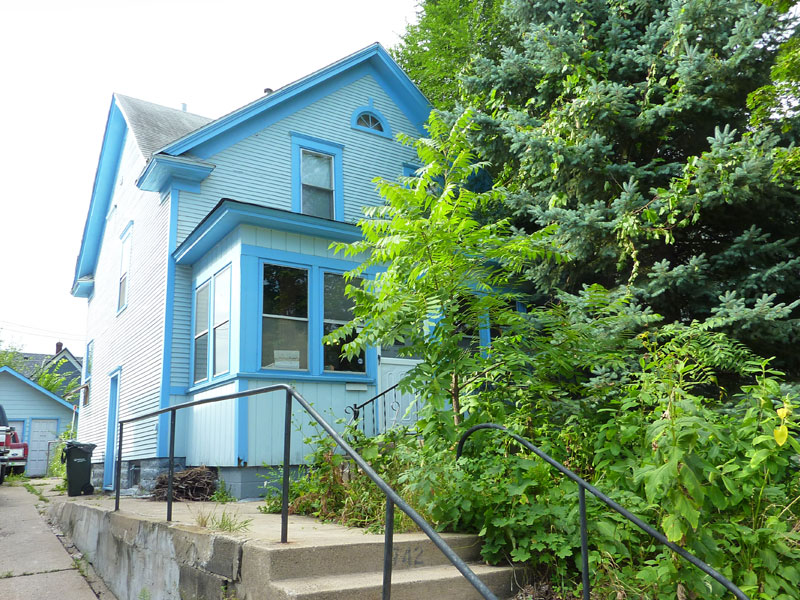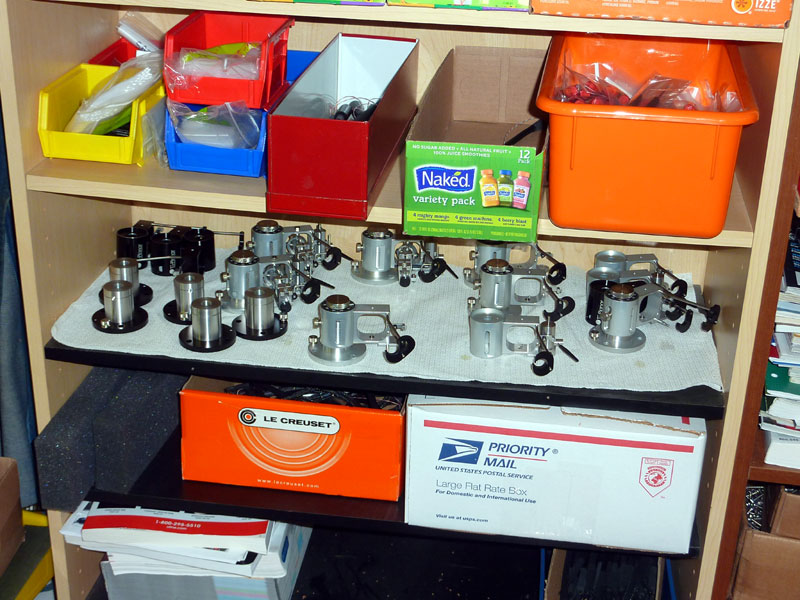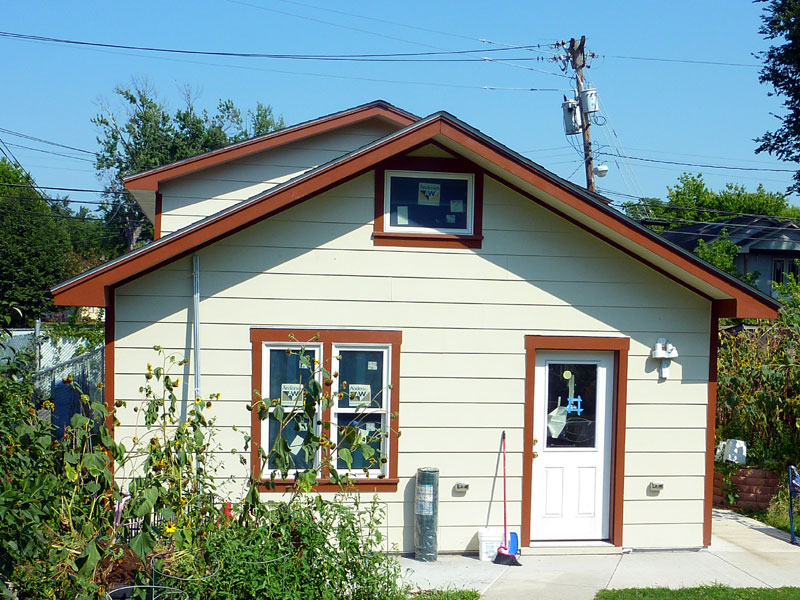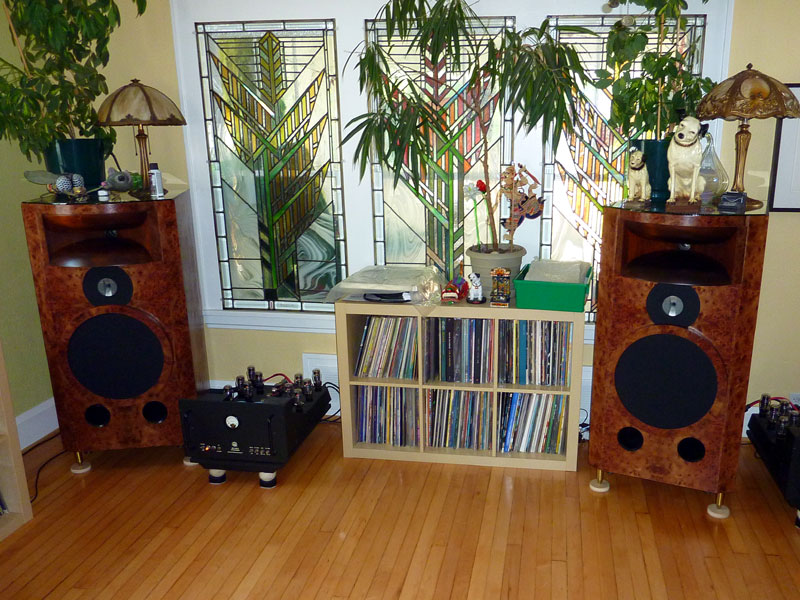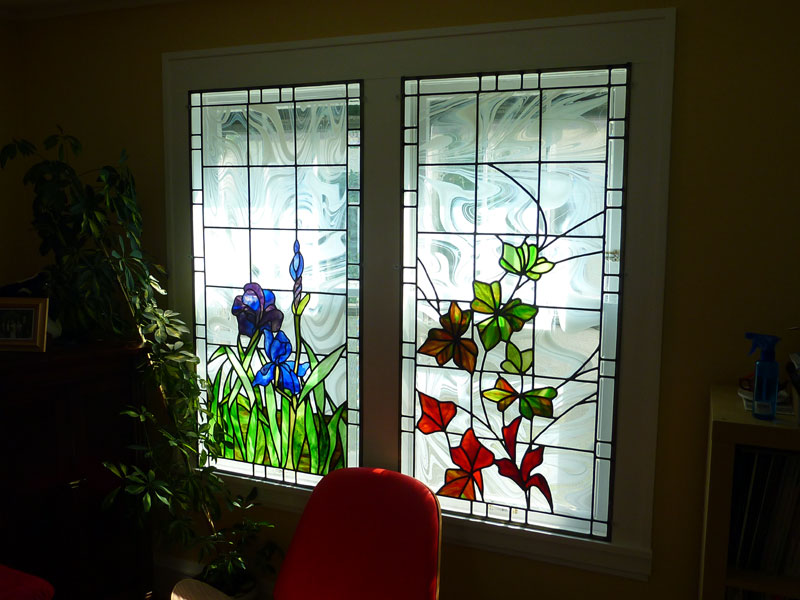Home Business 2.0
n case you didn't know it, The Audio Beat is a home business -- sometimes a little too much of a business, leaving not enough of a home. There are two rooms of our house -- the large main living area and an extra bedroom -- that function as the site's audio and computer headquarters, with extra space set aside in the garage for storage, mostly of the boxes and crates in which review gear comes. I can't even imagine finding the space needed to manufacture something, anything, here, but that's just what Ralph Karsten of Atma-Sphere and Tri Mai of Tri-Planar have done. They converted living space into manufacturing space in ways that have benefited both their personal and professional lives. I first visited Atma-Sphere in the early 2000s, when it was located on Wheeler Avenue in St. Paul, Minnesota, and was housed in Ralph Karsten's own house -- one of those big-boned two-story numbers built in abundance in 1930s. It gave Ralph and Atma-Sphere just enough space for cramped working areas, where Atma-Sphere amps and preamps were made, a small listening area, and offices upstairs. And so it was for Atma-Sphere for more than a decade, until Ralph realized that the house wasn't big enough for both him and a growing Atma-Sphere. "It wasn't so much that the business was in my way. I was in its way," he explained. So he began looking for commercial property for Atma-Sphere, which is abundant in his St. Paul neighborhood. However, the prices definitely weren't right, with even spaces that would be tight for the company costing more than was wise to pay.
So Ralph came up with a solution that was so simple as to be truly inspired: He decided to look at houses for Atma-Sphere. A half-mile away he found the perfect place -- another big two-story with about the same space and layout as his house.
Seeing it underscores Ralph's buying decision and the strategy in general. It's still a house inside, with kitchen, bath and upstairs bedrooms. But what would be the dining and living rooms have been converted into work areas, with benches, lights and even a rack at one end with all of the audio gear needed for testing. The covered front porch is perfect for the storage of boxes, and a side door opens directly to the driveway, making pickup and delivery easy. In 1995, Tri Mai of Tri-Planar was working at Atma-Sphere making amps and preamps when he decided to buy his "last analog system," as he put it, which included a Tri-Planar tonearm. In order to find out more about the 'arm, he began a dialog with Herb Papier, who designed and built it, and over the course of time he became an advanced user -- someone who truly understood the 'arm and all of its intricacies and idiosyncrasies.
In 1997, Herb invited Tri to Maryland to see how the Tri-Planar was built and deepen his understanding of the 'arm. In 1999, in failing health, Herb sold the company to Tri Mai, who moved its operations to St. Paul. In 2003, Tri moved into his current house, and the business moved with him, taking root in his tight basement, where all construction takes place and the stock of parts -- there are 103 in a Tri-Planar tonearm -- is stored.
While tonearm manufacturing takes much less space than building amps and preamps, Tri, his wife and their dog still needed to live in the house, so in 2009 he began construction of a "carriage house" in the rear of his property. That building, the future home of Tri-Planar, is basically finished, but Tri-Planar has done very well during the upswing in analog playback, so Tri hasn't had the time to move from the basement into this new building -- but that's coming.
What's most interesting to me about the current Tri-Planar HQ is a fact that dovetails nicely with the building of the tonearm. Tri Mai is a trained artist with commissions and teaching on his résumé, and his house is a gallery of sorts. Many of the windows are covered with stained-glass panels that Tri made, sixteen in total, each taking a month to finish. There are large puppets on the front porch that his wife created, and a huge metal fish on the front lawn near the walkway to the front door.
There's something uniquely appropriate about an artist building a tonearm -- something about the intricate work involved in creating stained glass that translates to manufacturing a tonearm. The stained glass also gives the house's interior a soft glow that lends itself to the calm concentration that listening cultivates. For now, The Audio Beat will remain firmly rooted
in our house, although both Ralph's and Tri's methods of expansion appeal to me. I'd love
to have a dedicated listening house where I could spread out, all of my records, CDs and
SACDs at hand, but even better would be a building on the property that's a ten-second
walk from the main house. We have a two-acre lot, so that dream could become a reality. |

